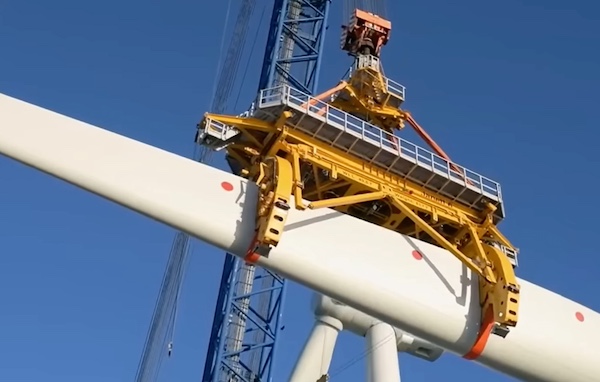
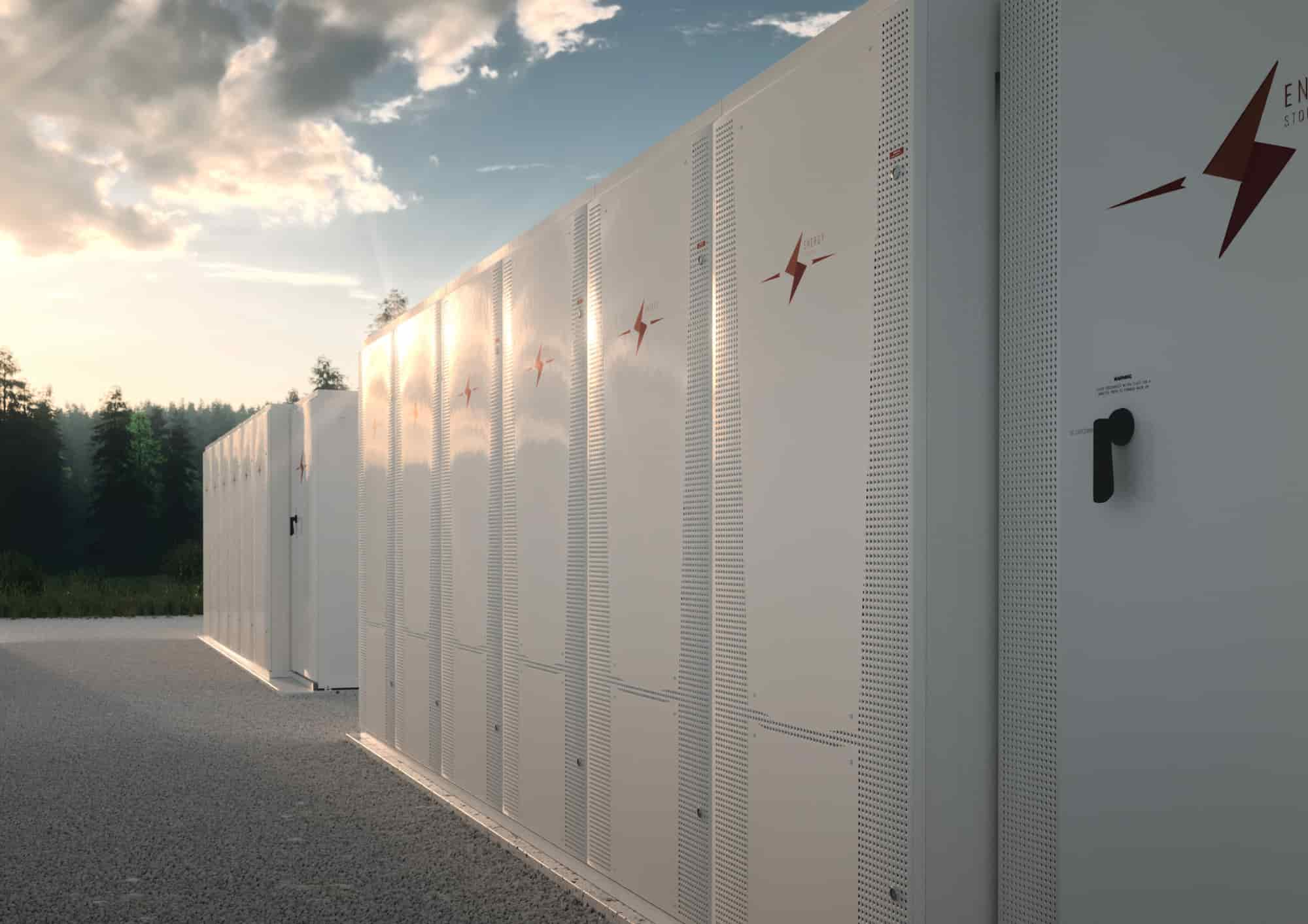
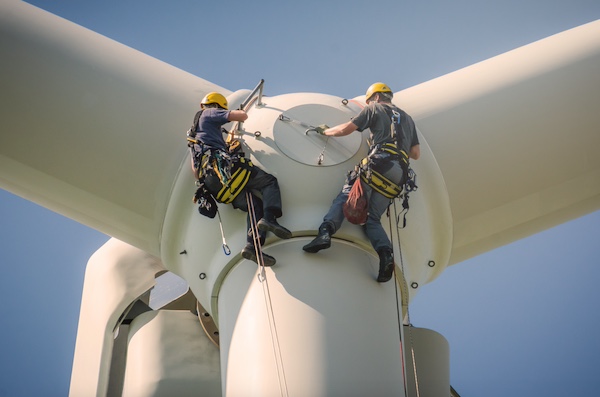
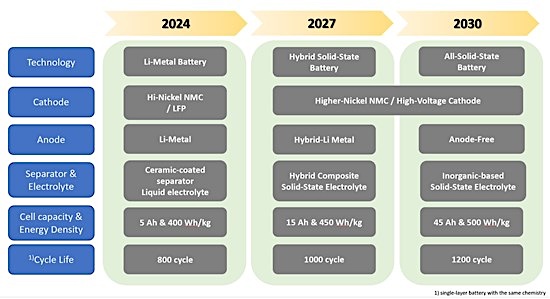
Volt Carbon Technologies Inc. (TSXV: VCT) (OTCQB: TORVF) ("Volt Carbon" or the "Company") is pleased to announce the release of its initial test results for its exclusive Lithium Iron Phosphate battery (LFP) employing its internally developed electrolyte. These batteries were manufactured at Volt Carbon's subsidiary, Solid UltraBattery's ("SUB") facility, situated in Guelph, Ontario. These recent findings mark a significant step forward in Solid UltraBattery's advancement of high-energy LFP technology, as initially outlined in the Company's roadmap which was disclosed to the public on July 24, 2023.
Background
The increasing popularity of Lithium Iron Phosphate (LFP) arises from its cost-effectiveness compared to Lithium Nickel Cobalt Manganese Oxide (NCM), achieved by substituting the NCM cathode with an LFP cathode. Traditionally, a significant drawback has been LFP's limited energy density, impacting the driving range of electric vehicles (EVs). Numerous articles in literature confirm LFP's drawbacks, including a 2023 Forbes Magazine piece titled "Lithium Iron Phosphate Set To Be The Next Big Thing In EV Batteries," which notes a 30-40% lower energy density of LFP compared to NCM, along with the safety advantages of the LFP cathode over NCM in the event of a battery fire. A link to this article can be found at https://www.forbes.com/sites/samabuelsamid/2023/08/16/lithium-iron-phosphate-set-to-be-the-next-big-thing-in-ev-batteries/?sh=340446717515.
Highlights
In response to the energy density limitations of LFP, along with its acknowledged safety advantages over NCM, SUB has been working on a lithium (Li)-metal LFP battery to improve energy density. Management believes they have achieved an industry-leading 280Wh/kg for this cathode type. This technology has the potential to significantly impact battery competitiveness for electric vehicles and battery-powered devices by offering cost-effective alternatives through the removal of nickel and cobalt. Recent testing by SUB demonstrates that LFP/Li-metal battery coin cells have endured 800 cycles while maintaining 78.5% of their capacity (refer to Figure 1), marking a notable milestone in LFP/Li-metal battery technology advancement.
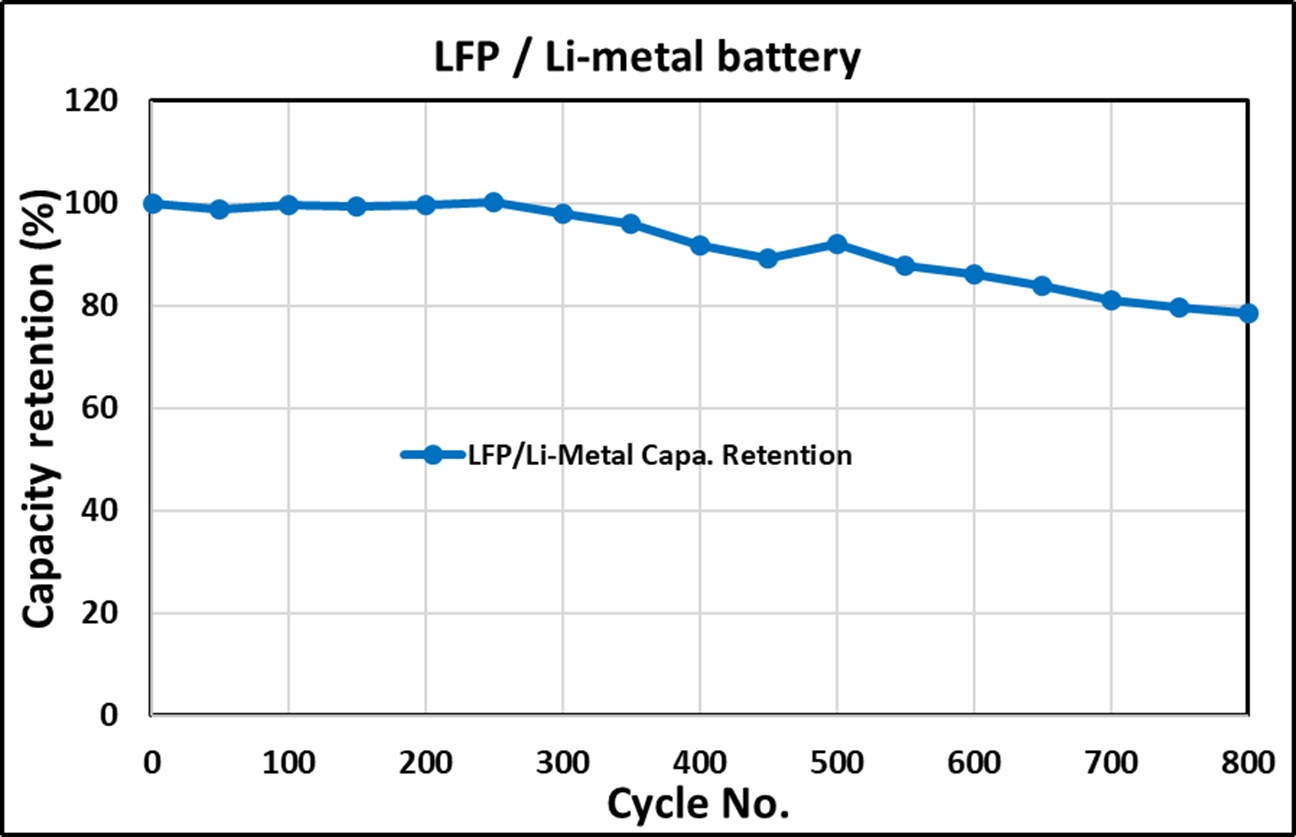
Fig. 1: Li-Metal LFP Coin Cell, Charge/Discharge data, 2.9-3.7V, C/3, 25 °C
Next Steps
These test outcomes reaffirm the Company's goal to surpass 800 cycles and achieve an 80% capacity threshold by the end of 2024 with Lithium (Li)-metal Iron Phosphate battery technologies. Additionally, the Company remains steadfast in following its technology roadmap, initially released on July 24, 2023 (refer to Figure 2 below), which outlines its strategic trajectory for lithium-ion battery product advancement until 2030.
Update on Graphite Development
Since the start of 2024, the Company has enhanced its Guelph prototype battery lab with more fabrication and cycle testing equipment, boosting its capacity to build and test pouch and coin cells. This new equipment will help in development of battery-grade anodes processed from Volt Carbon's Scarborough facility. More test results from the battery anode testing will be published in the coming months.
.jpg)
Fig. 2: Volt Carbon's Product Roadmap
V-Bond Lee, the Company's CEO and President, expressed his satisfaction, stating, "I'm thrilled with these great results; hitting 800 cycles is a new milestone for the Company. Our ongoing investment in talent and equipment is guiding Solid UltraBattery towards an exciting journey in energy storage development. We're fully committed to advancing and bringing our technology to market."
Volt Carbon | www.voltcarbontech.com

Heliene, Inc. ("Heliene"), one of North America's fastest-growing manufacturers of high-quality solar energy equipment, announced a multiyear module supply agreement and strategic partnership with UGE, (TSXV: UGE) (OTCQB: UGEIF) (the "Company" or "UGE"), a leading community and commercial solar developer.
Through this agreement and partnership, Heliene will help UGE improve project economics and materially reduce supply chain risk with the provision of high-quality U.S.-made solar photovoltaic (PV) modules with U.S.-made cells.
Use of Heliene's modules will help UGE's projects qualify for the Domestic Content Investment Tax Credit (ITC) Bonus under the Inflation Reduction Act of 2022 (IRA). Federal investments made available via the IRA are expected to continue to lower clean energy costs and incentivize U.S. solar project development this decade. As the U.S. seeks to expand its role in the global solar manufacturing market, demand for high-quality, built-to-order modules will also increase. Heliene and UGE's partnership will directly support these efforts by bolstering the U.S. solar supply chain and investing in domestic manufacturing.
With the Heliene supply agreement in place, UGE is projected to begin qualifying for the Domestic Content Tax Credit on projects which start construction as early as this summer. The Domestic Content Credit, paired with other qualifying Investment Tax Credits Bonuses, make a significant positive impact on project economics for UGE and other solar developers. Improved project economics result in more affordable energy for the users of power, from its systems as well as a larger addressable market.
Access to Heliene's domestically-manufactured products and localized supply chains through this agreement will also allow UGE to de-risk its PV module supply, reducing the potential for costly project delays.
"We are proud to partner with UGE to provide peace of mind through material that derisks supply of PV modules and helps expand the use of Heliene's American-made, high-quality, and reliable solar technologies," said Martin Pochtaruk, CEO at Heliene. "We are excited to collaborate with a like-minded company that has been our client for over a decade, now supplying U.S.-made modules with U.S.-made cells; we all look forward to this multiyear agreement with an already long-term partner."
UGE, with a mission to make renewable energy accessible and affordable for all, is focused on strengthening energy equity and grid resilience by developing its projects primarily in low-to moderate-income communities and those most adversely affected by the transition away from the fossil fuel economy.
"We are thrilled about our partnership with Heliene, which will provide us with a reliable source of high-quality modules and support the critical need for growth in domestic solar manufacturing," said Nick Blitterswyk, UGE's Founder and CEO. "Perhaps most exciting for us, this partnership will help us qualify for Domestic Content Tax Credits, improving our project economics so we can expand our impact by developing more renewable energy projects for the communities we serve."
Heliene | www.heliene.com
UGE | https://ugei.com/
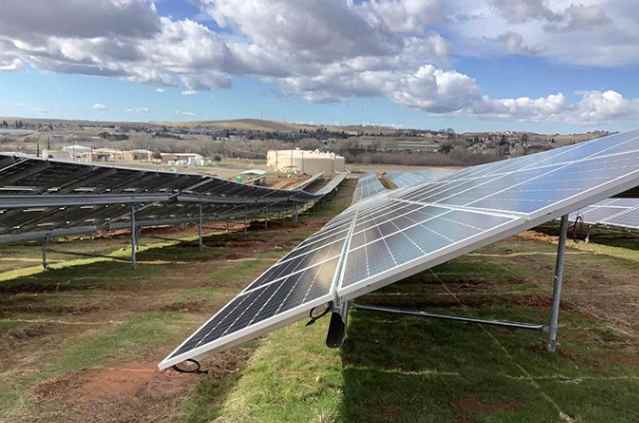
Vesper Energy, a developer, owner, and operator of utility-scale renewable energy assets, announced the sale of its Deer Creek Renewable Energy project to a leading Fortune 500 energy company. Deer Creek Renewable Energy is a solar and storage project located on 378 acres in Tulare County, California with a potential generating capacity of up to 50 MWac solar and up to 50 MW of energy storage capacity.
"We are excited about the sale of the Deer Creek Renewable Energy project, which showcases Vesper Energy's strong growth and development portfolio in key renewable energy markets like California," said Mark Rostafin, Co-Chief Executive Officer at Vesper Energy. "We look forward to building on this momentum as we enter a new phase of growth."
The Deer Creek Renewable Energy project sale supports Vesper's mission to use technology and strategic partnerships to advance clean energy infrastructure across the U.S. Vesper Energy has two additional projects currently in development in Tulare County, underscoring the organization's commitment to the area's clean energy transition and alignment to California's goal to establish 100% zero-carbon energy planning by 2045. Today, Vesper Energy's development pipeline in California represents approximately 1750 MW of solar and energy storage projects.
Vesper Energy | https://vesperenergy.com/

Sonoma Clean Power (SCP) marks a significant milestone as it celebrates a decade of leadership in delivering clean, affordable, and locally sourced energy to its communities. Founded in response to the desire for a choice in a customer-owned public utility, SCP emerged as California's second Community Choice Aggregator (CCA) in 2014, and today generates the power for 87 percent of all homes and businesses in Sonoma and Mendocino counties. Without relying on taxes, it has since constructed 195 megawatts (MW) of new renewable power and passed more than $100 million in direct savings to its more than 500,000 customers. SCP pioneers dozens of innovative programs and gives back to the community along the way.
"After 10 years, we're proud that we can definitively say this idea for a customer-owned utility providing cleaner energy at competitive rates has worked," said CEO Geof Syphers. "Through natural disasters and other challenges, we've consistently delivered cleaner, cost-effective power, proving our resilience. Moving forward, there is much work to do, and our incredible team and board members remain committed to combating the climate crisis head-on, helping customers cut their energy costs, and serving our communities."
"Over the past decade, Sonoma Clean Power has been fighting for the climate AND saving customers money," added Lynda Hopkins, County of Sonoma fifth district Supervisor and SCP board chair. "The agency has successfully gained the support and resources we need to improve power reliability. SCP is dedicated to energy equity and providing the tools and solutions for every single customer to benefit from the cleanest energy available."
Prior to SCP's inception, California's energy crisis prompted legislative action in 2002, empowering local governments to take over procuring electricity for residents and businesses. By 2014, SCP was operational in Sonoma County and service was expanded to Mendocino County in 2017. With SCP paving the way as an early example, there are now 25 CCAs in California serving more than 14 million customers and building more than 14,000 MW of new renewable power.
"Congratulations to Sonoma Clean Power on 10 years of serving its community and bringing clean energy and electrification mainstream," said David Hochschild, chair of the California Energy Commission.
10 Years of Progress
Over the past decade, SCP has initiated many innovative programs, setting a standard for sustainable power throughout the state. In 2014, SCP debuted EverGreen, becoming California's sole – and still only – utility offering 100 percent locally generated energy 24 hours per day, seven days per week. Today, nine of SCP's member cities and counties have switched all, or some, of their facilities to EverGreen, along with more than 4,000 business and residential customers. EverGreen is now a model for California's future as the first electric service that complies with the state's climate goals for the year 2045.
Working to help make electrification more accessible, Drive EV assisted more than 1,250 customers make the switch to electric vehicles (EV) over its three year duration. Partnerships with CALeVIP and the Bike Electric program have promoted clean transportation solutions and supported California's goal of installing 250,000 public EV charging stations by 2025, as well as facilitated electric bike purchases for 423 low income customers. SCP's Advanced Energy Center, which opened in 2021 in downtown Santa Rosa, offers resources and support for customers transitioning to electric appliances and technologies, boasting more than 10,000 visitors and providing millions of dollars in rebates and incentives since opening. In 2022, SCP unveiled its all-electric headquarters, the world's first "GridOptimal" building, a milestone in energy consumption optimization and decarbonization of the state's electric grid.
The Advanced Energy Rebuild Program supported the construction of 344 new homes and provided over $1.8 million in total incentives to homeowners affected by the area's devastating 2017 wildfires. Since 2018, the Nonprofit EV Incentive Program has facilitated the purchase of 20 EVs for local nonprofits, reducing emissions and supporting their essential work.
In addition to directly serving its customers, SCP advocates on behalf of all citizens of Sonoma and Mendocino counties in the California state legislature, as well as at various regulatory agencies. This work includes developing and pursuing policies that support the agency's mission to combat the climate crisis, benefiting customers in its service area and across the state. These successes have reduced customers' bills by tens of millions of dollars. In 2020, SCP and a coalition of CCAs found multiple accounting and math errors in a PG&E proposal. A judge subsequently ordered PG&E to correct its math, reducing charges to customers in Sonoma and Mendocino counties by $34 million dollars in 2021 alone.
Community partnerships and investment have always been a cornerstone of SCP's values. Over the past 10 years, SCP has provided more than $5 million in donations and sponsorships to nonprofit organizations and groups, with a particular focus on addressing the fundamental needs of its community members.
A Look to the Future
At the forefront of SCP's mission is to end all reliance on fossil fuels. To this end, SCP has initiated the Geothermal Opportunity Zone (GeoZone) to accelerate the development of local geothermal resources needed to meet the state's clean energy goals. The ultimate aim of the GeoZone is to build 600 MW of new, renewable baseload power to support the existing solar power throughout Sonoma and Mendocino counties while showcasing the potential of new geothermal technologies that can be used worldwide.
Grid reliability continues to pose a major threat to the clean energy transition, and SCP is building on its award-winning demand response program launched in 2018 with GridSavvy Rewards. The program offers cash rewards to customers who conserve energy when SCP sends an alert. In 2023, over 7,600 households participated and cut three MW on impacted summer days.
With energy bills reaching higher prices than ever, SCP remains focused on affordability and meeting its customers' basic needs. Its Advanced Energy Center will now be known as the Sonoma Clean Power Customer Center. The reimagined Customer Center will educate visitors on clean energy technologies and provide a place where customers can speak to a knowledgeable staff member regarding understanding their bills, strategies to lower costs, and programs and incentives.
"As we head into our next decade, our focus remains clear: to make the transition to cleaner energy not just a concept, but an affordable reality," continued Syphers. "We stand as your ally, dedicated to making the energy transition easier.
Sonoma Clean Power | sonomacleanpower.org

Volvo CE has taken a 22% ownership stake in VizaLogix, a US-based software-as-a-service (SaaS) company specializing in digital, brand-neutral solutions for machine monitoring, servicing and tech support in multiple industries.
The deal supports the Volvo CE strategy to grow services that customers are looking for as digitization and data take on increasing importance among construction and mining fleets and equipment dealers.
“This partnership is a great fit because VizaLogix and Volvo CE have a common goal to improve customer experience through increased efficiency, uptime and productivity,” said Scott Young, Head of Region North America, Volvo CE. “VizaLogix provides brand-neutral SaaS solutions that are easy to integrate and use, helping fleets, dealers and OEMs make smarter decisions.”
VizaLogix, based in Connecticut, will continue to operate independently and support multiple brands with their products to provide best-in-class support for mixed fleets operations.
“As we embark on this exciting new chapter with Volvo, we are thrilled to welcome them as a strategic minority investor in VizaLogix. This partnership marks a significant milestone for us, reaffirming our commitment to pioneering innovative solutions in the construction equipment industry and we are confident that together, we will drive even greater value for our customers and stakeholders,” said Shawn Bonnington, CEO, VizaLogix.
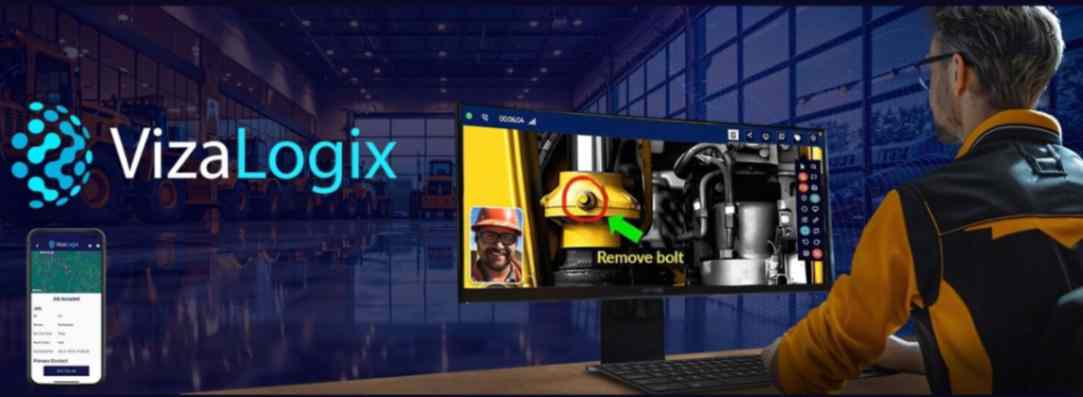
Developing customer solutions
VizaLogix offers products that are different from and, in some cases, complementary to Volvo services. Supporting mixed fleets and mixed data connections uniquely defines the VizaLogix product approach and market differentiation. These include:
For years, Volvo CE has been developing innovative services that improve customer uptime, productivity and safety. These include ActiveCare Direct advanced telematics, Assist machine control systems and productivity services like Connected Map, Task Manager and Connected Load Out.
“Volvo CE recognizes that services are growing to be just as important to fleets as their machines, and our investment in VizaLogix extends our commitment,” Young said. “It’s by combining the right machine with the right services that users get the best solution for their unique needs.”
Volvo CE | https://www.volvoce.com/
VizaLogix | www.vizalogix.com
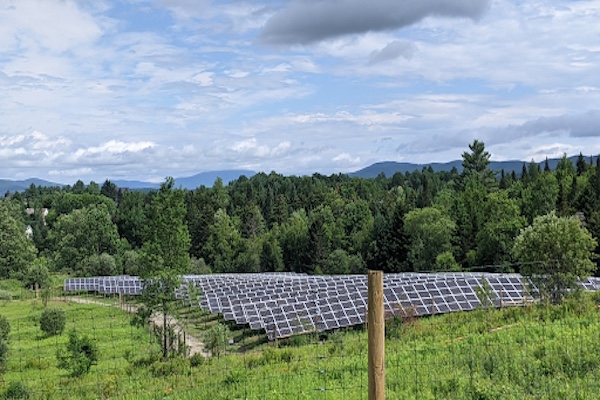
Morrisville Water and Light (MWL) has taken a significant step towards bolstering its reliability and ensuring affordability with the unanimous approval from its Board of Trustees for an Energy Storage Service Agreement with Encore Renewable Energy (Encore) for the development of a five-Megawatt battery storage project.
"We are thrilled to embark on this innovative partnership with Encore," said Scott Johnstone, General Manager at MWL. "This project underscores our commitment to delivering reliable, affordable, and sustainable energy solutions for our community."
The project includes the installation of a 4.96 MW battery system near the Salvage Yard Solar project, capable of providing 22,000 kWh on a full charge. This substantial capacity, approximately 60% of MWL's typical peak demand, positions MWL to leverage the batteries for various purposes, including voltage spike absorption, peak demand reduction, participation in the ISO NE capacity market, and grid resilience during emergencies such as brownouts.
Moreover, the energy storage system will enable MWL to engage in energy arbitrage, optimizing energy costs by charging the batteries during off-peak hours and discharging them during periods of high demand.
“Providing energy storage services from this system will create significant cost savings for MWL and reduce the carbon intensity of the grid during times of peak demand,” said Jesse Stowell, Encore’s Chief Commercial Officer. “This partnership is a prime example of how communities can become leaders in the clean energy transition and deliver smart energy solutions to their customers.”
“This project is a critical step forward in our transition to a clean energy future,” added Johnstone. “With the shifting landscape of energy generation in the state, including a state policy that discourages hydro power, both from Hydro Quebec and more locally our Green River hydro facility, combined with the intermittent nature of solar and wind energy, battery storage is emerging as a crucial component in enhancing reliability and managing costs so we can keep rates affordable for our customers.”
The project is scheduled to commence operations in November 2026, marking a significant milestone in MWL's journey towards a more resilient and cost-effective energy future.
Morrisville Water and Light | https://www.mwlvt.com/
Encore Renewable Energy | encorerenewableenergy.com
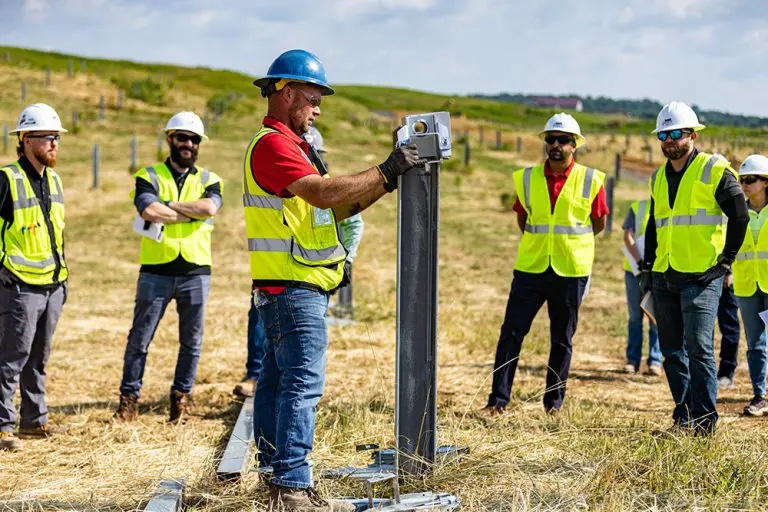
The Nevados All Terrain solar tracker can be assembled and installed faster than any tracker in its class, according to a new report from Eclipse-M, a leading independent technical consultant for solar project construction. While other solar trackers require anywhere from 159 to 244 work hours per megawatt, using the Nevados tracker cuts assembly labor down to just 118 work hours per megawatt, Eclipse-M reported.
The All Terrain Tracker’s unique adaptability allows tracker bays to follow the natural terrain, eliminating the need for extensive site grading to install the tracker. This keeps the topsoil in place and prevents harmful runoff by maintaining the land’s natural permeability. It also significantly reduces construction time due to the grading process itself and the resulting muddy conditions which can slow down tracker assembly.
Nevados has found that the same flexible tolerances that allow its tracker to navigate terrain and eliminate grading also allow for very efficient installation times.
“Along with the terrain-following benefits that you'll see from Nevados, we're not seeing a penalty in terms of installation, which is good news,” said Bill Poulin, Managing Partner of Eclipse-M, who will present on his findings at 1:30 pm Central today at Booth #707 at the CLEANPOWER conference and trade show in Minneapolis. “We really think that terrain following is an important new development in tracker design and methodology, so it's good to see that can be achieved.”
Eclipse-M is a leading third party services and consulting provider for the solar industry, with decades of experience executing projects in close consultation with developers and OEMs. It has aided in the development and execution of projects using 14 leading tracker and fix-tilt assemblies, providing the company unique insights into the factors driving construction time.
“Nevados is a customer-focused company, so we’re always working with our partners to improve our products and processes to ensure our tracker can be constructed quickly and precisely,” said Yezin Taha, CEO and founder of Nevados.
For their report, Eclipse-M looked at a range of factors affecting install rates under normalized conditions such as the same module wattage for each tracker, including:
In looking at the amount of physical work going into tracker installation, Eclipse-M analyzed the structure’s complexity, number of components, as well as the product's tolerances and the required precision for construction. They also looked at the drive and mounting systems, as well as the module attachment (whether using bolts/nuts or clamps).
Even the most accurate site surveys won’t be 100% accurate, so broad tolerances are key. Nevados uses flexible bearings at each foundation. Even when pilings are not exactly where they are expected to be, the All Terrain Tracker can easily adjust with no re-work.
At the Bartonsville solar plant in Virginia, the developer needed to switch panel manufacturers late in the project’s development because of supply chain issues. The new panels used had different points of connection and had different dimensions from the original panels.
It was easy to make that change using the more flexible Nevados system, whereas other trackers would have required moving hundreds of foundation pilings across many acres of trackers, and could require an entirely new torque tube assembly to adjust to this change.
Nevados also works closely with EPCs to optimize material handling, cutting preparation time. Through detailed post project reviews with customers, Nevados learned that changes in how components for the All Terrain Tracker arrived on site could create installation time improvements for customers. Now, some components will arrive preassembled while others that previously did, will arrive disassembled.
Nevados uses American steel for its trackers, rather than aluminum, cutting out long and volatile global supply chains. Tracker components are fabricated by Priefert Steel in Mount Pleasant, Texas, a central location to allow easy shipping to sites across the United States. A factory open house and media tours are planned for Wednesday, May 22.
Nevados | www.nevados.solar
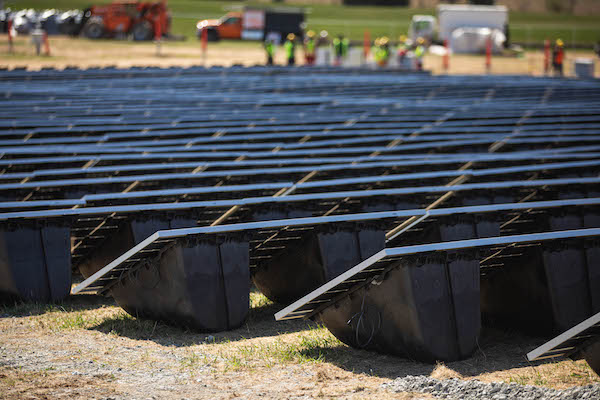
Alternative Energies May 15, 2023
The United States is slow to anger, but relentlessly seeks victory once it enters a struggle, throwing all its resources into the conflict. “When we go to war, we should have a purpose that our people understand and support,” as former Secretary ....

Unleashing trillions of dollars for a resilient energy future is within our grasp — if we can successfully navigate investment risk and project uncertainties.
The money is there — so where are the projects?
A cleaner and more secure energy future will depend on tapping trillions of dollars of capital. The need to mobilize money and markets to enable the energy transition was one of the key findings of one of the largest studies ever conducted among the global energy sector C-suite. This will mean finding ways to reduce the barriers and uncertainties that prevent money from flowing into the projects and technologies that will transform the energy system. It will also mean fostering greater collaboration and alignment among key players in the energy space.
 Interestingly, the study found that insufficient access to finance was not considered the primary cause of the current global energy crisis. In fact, capital was seen to be available — but not being unlocked. Why is that? The answer lies in the differing risk profiles of energy transition investments around the world. These risks manifest in multiple ways, including uncertainties relating to project planning, public education, stakeholder engagement, permitting, approvals, policy at national and local levels, funding and incentives, technology availability, and supply chains.
Interestingly, the study found that insufficient access to finance was not considered the primary cause of the current global energy crisis. In fact, capital was seen to be available — but not being unlocked. Why is that? The answer lies in the differing risk profiles of energy transition investments around the world. These risks manifest in multiple ways, including uncertainties relating to project planning, public education, stakeholder engagement, permitting, approvals, policy at national and local levels, funding and incentives, technology availability, and supply chains.
These risks need to be addressed to create more appealing investment opportunities for both public and private sector funders. This will require smart policy and regulatory frameworks that drive returns from long-term investment into energy infrastructure. It will also require investors to recognize that resilient energy infrastructure is more than an ESG play — it is a smart investment in the context of doing business in the 21st century.
Make de-risking investment profiles a number one priority
According to the study, 80 percent of respondents believe the lack of capital being deployed to accelerate the transition is the primary barrier to building the infrastructure required to improve energy security. At the same time, investors are looking for opportunities to invest in infrastructure that meets ESG and sustainability criteria. This suggests an imbalance between the supply and demand of capital for energy transition projects.
How can we close the gap?
One way is to link investors directly to energy companies. Not only would this enable true collaboration and non-traditional partnerships, but it would change the way project financing is conceived and structured — ultimately aiding in potentially satisfying the risk appetite of latent but hugely influential investors, such as pension funds. The current mismatch of investor appetite and investable projects reveals a need for improving risk profiles, as well as a mindset shift towards how we bring investment and developer stakeholders together for mutual benefit. The circular dilemma remains: one sector is looking for capital to undertake projects within their skill to deploy, while another sector wonders where the investable projects are.
This conflict is being played out around the world; promising project announcements are made, only to be followed by slow progress (or no action at all). This inertia results when risks are compounded and poorly understood. To encourage collaboration between project developers and investors with an ESG focus, more attractive investment opportunities can be created by pulling several levers: public and private investment strategies, green bonds and other sustainable finance instruments, and innovative financing models such as impact investing.

Expedite permitting to speed the adoption of new technologies
Another effective strategy to de-risk investment profiles is found in leveraging new technologies and approaches that reduce costs, increase efficiency, and enhance the reliability of energy supply. Research shows that 62 percent of respondents indicated a moderate or significant increase in investment in new and transitional technologies respectively, highlighting the growing interest in innovative solutions to drive the energy transition forward.
Hydrogen, carbon capture and storage, large-scale energy storage, and smart grids are some of the emerging technologies identified by survey respondents as having the greatest potential to transform the energy system and create new investment opportunities. However, these technologies face challenges such as long lag times between conception and implementation.
If the regulatory environment makes sense, then policy uncertainty is reduced, and the all-important permitting pathways are well understood and can be navigated. Currently, the lack of clear, timely, and fit-for-purpose permitting is a major roadblock to the energy transition. To truly unleash the potential of transitional technologies requires the acceleration of regulatory systems that better respond to the nuance and complexity of such technologies (rather than the current one-size-fits all approach). In addition, permitting processes must also be expedited to dramatically decrease the period between innovation, commercialization, and implementation. One of the key elements of faster permitting is effective consultation with stakeholders and engagement with communities where these projects will be housed for decades. This is a highly complex area that requires both technical and communication skills.
The power of collaboration, consistency, and systems thinking
The report also reveals the need for greater collaboration among companies in the energy space to build a more resilient system. The report shows that, in achieving net zero, there is a near-equal split between those increasing investment (47 percent of respondents), and those decreasing investment (39 percent of respondents). This illustrates the complexity and diversity of the system around the world. A more resilient system will require all its components – goals and actions – to be aligned towards a common outcome.
Another way to de-risk the energy transition is to establish consistent, transparent, and supportive policy frameworks that encourage investment and drive technological innovation. The energy transition depends on policy to guide its direction and speed by affecting how investors feel and how the markets behave. However, inconsistent or inadequate policy can also be a source of uncertainty and instability. For example, shifting political priorities, conflicting international standards, and the lack of market-based mechanisms can hinder the deployment of sustainable technologies, resulting in a reluctance to commit resources to long-term projects.
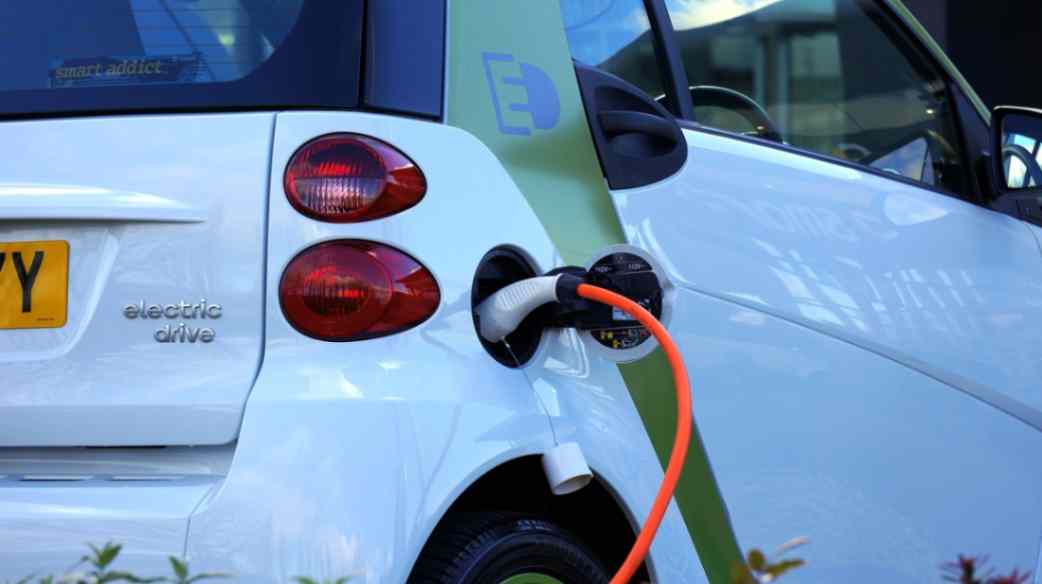
Variations in country-to-country deployment creates disparities in energy transition progress. For instance, the 2022 Inflation Reduction Act in the US has posed challenges for the rest of the world, by potentially channeling energy transition investment away from other markets and into the US. This highlights the need for a globally unified approach to energy policy that balances various national interests while addressing a global problem.
To facilitate the energy transition, it is imperative to establish stable, cohesive, and forward-looking policies that align with global goals and standards. By harmonizing international standards, and providing clear and consistent signals, governments and policymakers can generate investor confidence, helping to foster a robust energy ecosystem that propels the sector forward.
Furthermore, substantive and far-reaching discussions at international events like the United Nations Conference of the Parties (COP), are essential to facilitate this global alignment. These events provide an opportunity to de-risk the energy transition through consistent policy that enables countries to work together, ensuring that the global community can tackle the challenges and opportunities of the energy transition as a united front.
Keeping net-zero ambitions on track
Despite the challenges faced by the energy sector, the latest research reveals a key positive: 91 percent of energy leaders surveyed are working towards achieving net zero. This demonstrates a strong commitment to the transition and clear recognition of its importance. It also emphasizes the need to accelerate our efforts, streamline processes, and reduce barriers to realizing net-zero ambitions — and further underscores the need to de-risk energy transition investment by removing uncertainties.
The solution is collaborating and harmonizing our goals with the main players in the energy sector across the private and public sectors, while establishing consistent, transparent, and supportive policy frameworks that encourage investment and drive technological innovation.
These tasks, while daunting, are achievable. They require vision, leadership, and action from all stakeholders involved. By adopting a new mindset about how we participate in the energy system and what our obligations are, we can stimulate the rapid progress needed on the road to net zero.
Dr. Tej Gidda (Ph.D., M.Sc., BSc Eng) is an educator and engineer with over 20 years of experience in the energy and environmental fields. As GHD Global Leader – Future Energy, Tej is passionate about moving society along the path towards a future of secure, reliable, and affordable low-carbon energy. His focus is on helping public and private sector clients set and deliver on decarbonization goals in order to achieve long-lasting positive change for customers, communities, and the climate. Tej enjoys fostering the next generation of clean energy champions as an Adjunct Professor at the University of Waterloo Department of Civil and Environmental Engineering.
GHD | www.ghd.com
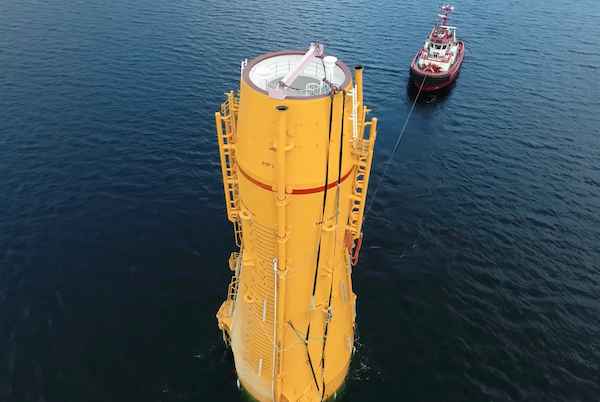
The Kincardine floating wind farm, located off the east coast of Scotland, was a landmark development: the first commercial-scale project of its kind in the UK sector. Therefore, it has been closely watched by the industry throughout its installation. With two of the turbines now having gone through heavy maintenance, it has also provided valuable lessons into the O&M processes of floating wind projects.
In late May, the second floating wind turbine from the five-turbine development arrived in the port of Massvlakte, Rotterdam, for maintenance. An Anchor Handling Tug Supply (AHTS)
vessel was used to deliver the KIN-02 turbine two weeks after a Platform Supply Vessel (PSV) and AHTS had worked to disconnect the turbine from the wind farm site. The towing vessel became the third vessel used in the operation.
This is not the first turbine disconnected from the site and towed for maintenance. In the summer of 2022, KIN-03 became the world’s first-ever floating wind turbine that required heavy maintenance (i.e. being disconnected and towed for repair). It was also towed from Scotland to Massvlakte.
Each of these operations has provided valuable lessons for the ever-watchful industry in how to navigate the complexities of heavy maintenance in floating wind as the market segment grows.

The heavy maintenance process
When one of Kincardine’s five floating 9.5 MW turbines (KIN-03) suffered a technical failure in May 2022, a major technical component needed to be replaced. The heavy maintenance strategy selected by the developer and the offshore contractors consisted in disconnecting and towing the turbine and its floater to Rotterdam for maintenance, followed by a return tow and re-connection. All of the infrastructure, such as crane and tower access, remained at the quay following the construction phase. (Note, the following analysis only covers KIN-03, as details of the second turbine operation are not yet available).
Comparing the net vessel days for both the maintenance and the installation campaigns at this project highlights how using a dedicated marine spread can positively impact operations.
For this first-ever operation, a total of 17.2 net vessel days were required during turbine reconnection—only a slight increase on the 14.6 net vessel days that were required for the first hook-up operation performed during the initial installation in 2021. However, it exceeds the average of eight net vessel days during installation. The marine spread used in the heavy maintenance operation differed from that used during installation. Due to this, it did not benefit from the learning curve and experience gained throughout the initial installation, which ultimately led to the lower average vessel days.
The array cable re-connection operation encountered a similar effect. The process was performed by one AHTS that spent 10 net vessel days on the operation. This compares to the installation campaign, where the array cable second-end pull-in lasted a maximum of 23.7 hours using a cable layer.
Overall, the turbine shutdown duration can be broken up as 14 days at the quay for maintenance, 52 days from turbine disconnection to turbine reconnection, and 94 days from disconnection to the end of post-reconnection activities.
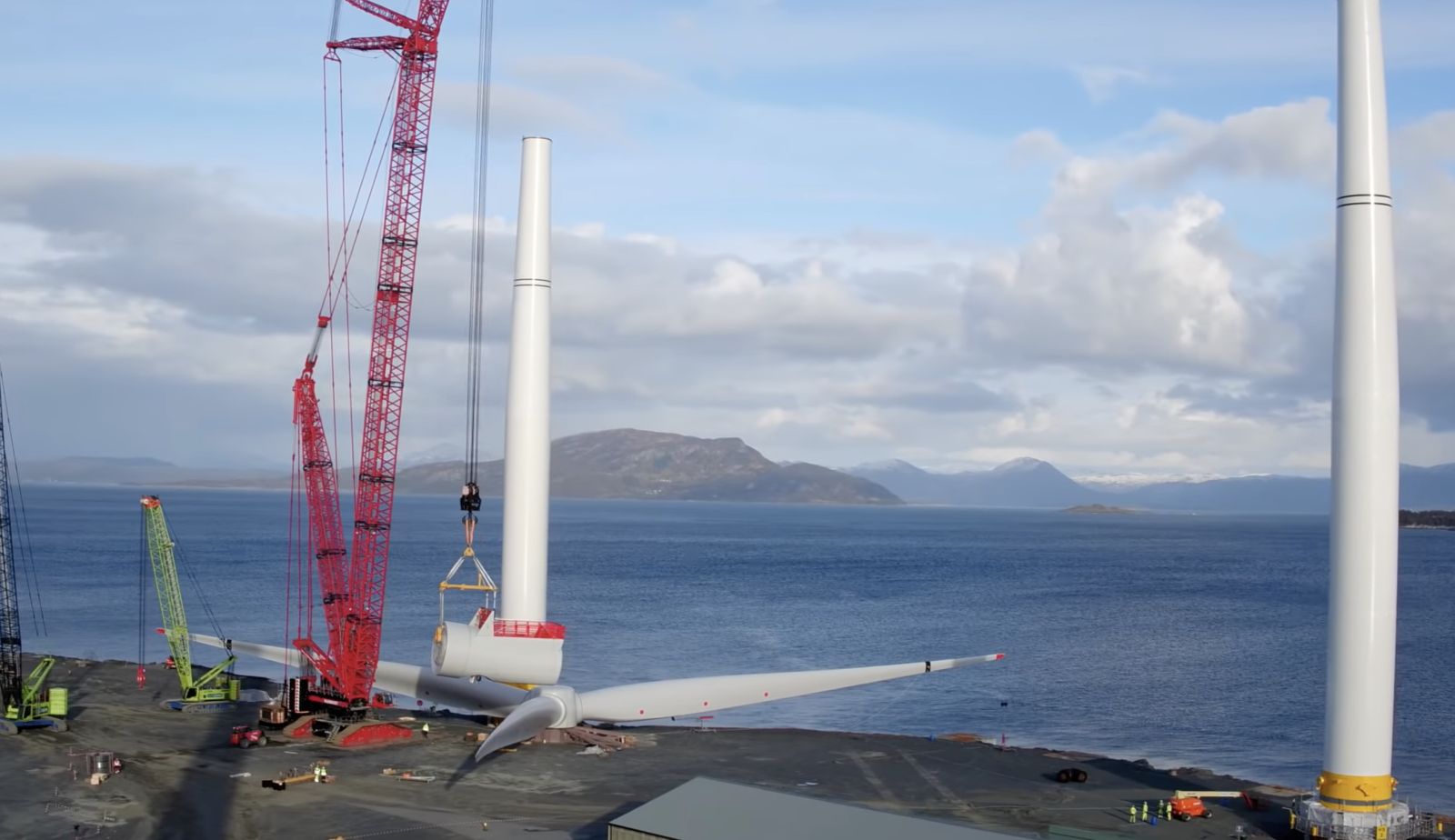
What developers should keep in mind for heavy maintenance operations
This analysis has uncovered two main lessons developers should consider when planning a floating wind project: the need to identify an appropriate O&M port, and to guarantee that a secure fleet is available.
Floating wind O&M operations require a port with both sufficient room and a deep-water quay. The port must also be equipped with a heavy crane with sufficient tip height to accommodate large floaters and reach turbine elevation. Distance to the wind farm should also be taken into account, as shorter distances will reduce towing time and, therefore, minimize transit and non-productive turbine time.
During the heavy maintenance period for KIN-03 and KIN-02, the selected quay (which had also been utilized in the initial installation phase of the wind farm project), was already busy as a marshalling area for other North Sea projects. This complicated the schedule significantly, as the availability of the quay and its facilities had to be navigated alongside these other projects. This highlights the importance of abundant quay availability both for installation (long-term planning) and maintenance that may be needed on short notice.
At the time of the first turbine’s maintenance program (June 2022), the North Sea AHTS market was in an exceptional situation: the largest bollard pull AHTS units contracted at over $200,000 a day, the highest rate in over a decade.
During this time, the spot market was close to selling out due to medium-term commitments, alongside the demand for high bollard pull vessels for the installation phase at a Norwegian floating wind farm project. The Norwegian project required the use of four AHTS above a 200t bollard pull. With spot rates ranging from $63,000 to $210,000 for the vessels contracted for Kincardine’s maintenance, the total cost of the marine spread used in the first repair campaign was more than $4 million.
Developers should therefore consider the need to structure maintenance contracts with AHTS companies, either through frame agreements or long-term charters, to decrease their exposure to spot market day rates as the market tightens in the future.

While these lessons are relevant for floating wind developers now, new players are looking towards alternative heavy O&M maintenance options for the future. Two crane concepts are especially relevant in this instance. The first method is for a crane to be included in the turbine nacelle to be able to directly lift the component which requires repair from the floater, as is currently seen on onshore turbines. This method is already employed in onshore turbines and could be applicable for offshore. The second method is self-elevating cranes with several such solutions already in development.
The heavy maintenance operations conducted on floating turbines at the Kincardine wind farm have provided invaluable insights for industry players, especially developers. The complex process of disconnecting and towing turbines for repairs highlights the need for meticulous planning and exploration of alternative maintenance strategies, some of which are already in the pipeline. As the industry evolves, careful consideration of ports, and securing fleet contracts, will be crucial in driving efficient and cost-effective O&M practices for the floating wind market.
Sarah McLean is Market Research Analyst at Spinergie, a maritime technology company specializing in emission, vessel performance, and operation optimization.
Spinergie | www.spinergie.com

According to the Energy Information Administration (EIA), developers plan to add 54.5 gigawatts (GW) of new utility-scale electric generating capacity to the U.S. power grid in 2023. More than half of this capacity will be solar. Wind power and battery storage are expected to account for roughly 11 percent and 17 percent, respectively.
A large percentage of new installations are being developed in areas that are prone to extreme weather events and natural disasters (e.g., Texas and California), including high wind, tornadoes, hail, flooding, earthquakes, wildfires, etc. With the frequency and severity of many of these events increasing, project developers, asset owners, and tax equity partners are under growing pressure to better understand and mitigate risk.
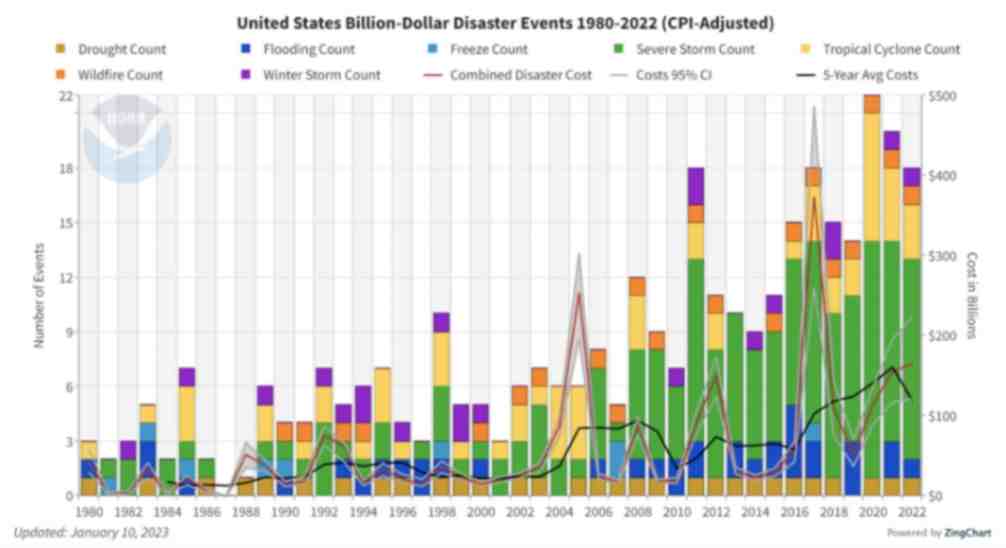
Figure 1. The history of billion-dollar disasters in the United States each year from 1980 to 2022 (source: NOAA)
In terms of loss prevention, a Catastrophe (CAT) Modeling Study is the first step to understanding the exposure and potential financial loss from natural hazards or extreme weather events. CAT studies form the foundation for wider risk management strategies, and have significant implications for insurance costs and coverage.
Despite their importance, developers often view these studies as little more than a formality required for project financing. As a result, they are often conducted late in the development cycle, typically after a site has been selected. However, a strong case can be made for engaging early with an independent third party to perform a more rigorous site-specific technical assessment. Doing so can provide several advantages over traditional assessments conducted by insurance brokerage affiliates, who may not possess the specialty expertise or technical understanding needed to properly apply models or interpret the results they generate. One notable advantage of early-stage catastrophe studies is to help ensure that the range of insurance costs, which can vary from year to year with market forces, are adequately incorporated into the project financial projections.
The evolving threat of natural disasters
Over the past decade, the financial impact of natural hazard events globally has been almost three trillion dollars. In the U.S. alone, the 10-year average annual cost of natural disaster events exceeding $1 billion increased more than fourfold between the 1980s ($18.4 billion) and the 2010s ($84.5 billion).

Investors, insurers, and financiers of renewable projects have taken notice of this trend, and are subsequently adapting their behavior and standards accordingly. In the solar market, for example, insurance premiums increased roughly four-fold from 2019 to 2021. The impetus for this increase can largely be traced back to a severe storm in Texas in 2019, which resulted in an $80 million loss on 13,000 solar panels that were damaged by hail.
The event awakened the industry to the hazards severe storms present, particularly when it comes to large-scale solar arrays. Since then, the impact of convective weather on existing and planned installations has been more thoroughly evaluated during the underwriting process. However, far less attention has been given to the potential for other natural disasters; events like floods and earthquakes have not yet resulted in large losses and/or claims on renewable projects (including wind farms). The extraordinary and widespread effect of the recent Canadian wildfires may alter this behavior moving forward.
A thorough assessment, starting with a CAT study, is key to quantifying the probability of their occurrence — and estimating potential losses — so that appropriate measures can be taken to mitigate risk.
All models are not created equal
Industrywide, certain misconceptions persist around the use of CAT models to estimate losses from an extreme weather event or natural disaster.
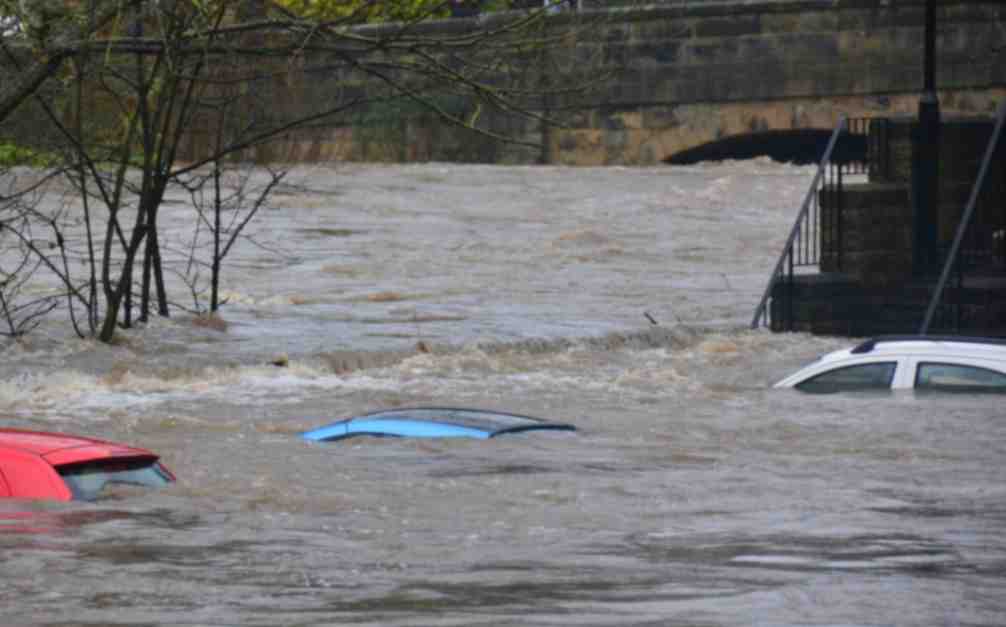
Often, the perception is that risk assessors only need a handful of model inputs to arrive at an accurate figure, with the geographic location being the most important variable. While it’s true that many practitioners running models will pre-specify certain project characteristics regardless of the asset’s design (for example, the use of steel moment frames without trackers for all solar arrays in a given region or state), failure to account for even minor details can lead to loss estimates that are off by multiple orders of magnitude.
The evaluation process has recently become even more complex with the addition of battery energy storage. Relative to standalone solar and wind farms, very little real-world experience and data on the impact of extreme weather events has been accrued on these large-scale storage installations. Such projects require an even greater level of granularity to help ensure that all risks are identified and addressed.
Even when the most advanced modeling software tools are used (which allow for thousands of lines of inputs), there is still a great deal that is subject to interpretation. If the practitioner does not possess the expertise or technical ability needed to understand the model, the margin for error can increase substantially. Ultimately, this can lead to overpaying for insurance. Worse, you may end up with a policy with insufficient coverage. In both cases, the profitability of the asset is impacted.
Supplementing CAT studies
In certain instances, it may be necessary to supplement CAT models with an even more detailed analysis of the individual property, equipment, policies, and procedures. In this way, an unbundled risk assessment can be developed that is tailored to the project. Supplemental information (site-specific wind speed studies and hydrological studies, structural assessment, flood maps, etc.) can be considered to adjust vulnerability models.
This provides an added layer of assurance that goes beyond the pre-defined asset descriptions in the software used by traditional studies or assessments. By leveraging expert elicitations, onsite investigations, and rigorous engineering-based methods, it is possible to discretely evaluate asset-specific components as part of the typical financial loss estimate study: this includes Normal Expected Loss (NEL), also known as Scenario Expected Loss (SEL); Probable Maximum Loss (PML), also known as Scenario Upper Loss (SUL); and Probabilistic Loss (PL).
Understanding the specific vulnerabilities and consequences can afford project stakeholders unique insights into quantifying and prioritizing risks, as well as identifying proper mitigation recommendations.
Every project is unique
The increasing frequency and severity of natural disasters and extreme weather events globally is placing an added burden on the renewable industry, especially when it comes to project risk assessment and mitigation. Insurers have signaled that insurance may no longer be the main basis for transferring risk; traditional risk management, as well as site and technology selection, must be considered by developers, purchasers, and financiers.
As one of the first steps in understanding exposure and the potential capital loss from a given event, CAT studies are becoming an increasingly important piece of the risk management puzzle. Developers should treat them as such by engaging early in the project lifecycle with an independent third-party practitioner with the specialty knowledge, tools, and expertise to properly interpret models and quantify risk.
Hazards and potential losses can vary significantly depending on the project design and the specific location. Every asset should be evaluated rigorously and thoroughly to minimize the margin for error, and maximize profitability over its life.
 Chris LeBoeuf is Global Head of the Extreme Loads and Structural Risk division of ABS Group, based in San Antonio, Texas. He leads a team of more than 60 engineers and scientists in the US, UK, and Singapore, specializing in management of risks to structures and equipment related to extreme loading events, including wind, flood, seismic and blast. Chris has more than 20 years of professional experience as an engineering consultant, and is a recognized expert in the study of blast effects and blast analysis, as well as design of buildings. He holds a Bachelor of Science in Civil Engineering from The University of Texas at San Antonio, and is a registered Professional Engineer in 12 states.
Chris LeBoeuf is Global Head of the Extreme Loads and Structural Risk division of ABS Group, based in San Antonio, Texas. He leads a team of more than 60 engineers and scientists in the US, UK, and Singapore, specializing in management of risks to structures and equipment related to extreme loading events, including wind, flood, seismic and blast. Chris has more than 20 years of professional experience as an engineering consultant, and is a recognized expert in the study of blast effects and blast analysis, as well as design of buildings. He holds a Bachelor of Science in Civil Engineering from The University of Texas at San Antonio, and is a registered Professional Engineer in 12 states.
ABS Group | www.abs-group.com
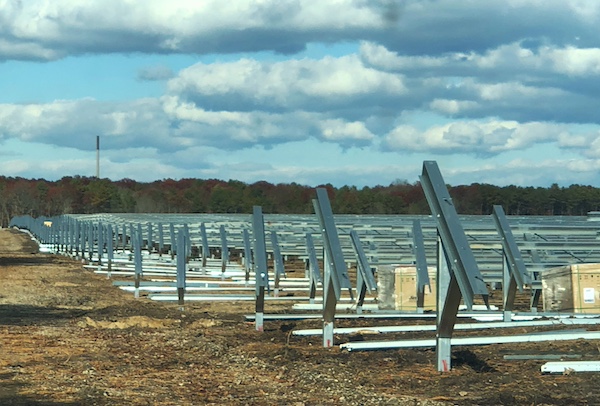
Throughout my life and career as a real estate developer in New York City, I’ve had many successes. In what is clearly one of my most unusual development projects in a long career filled with them, I initiated the building of a solar farm to help t....

I’m just going to say it, BIPV is dumb. Hear me out…. Solar is the most affordable form of energy that has ever existed on the planet, but only because the industry has been working towards it for the past 15 years. Governments,....
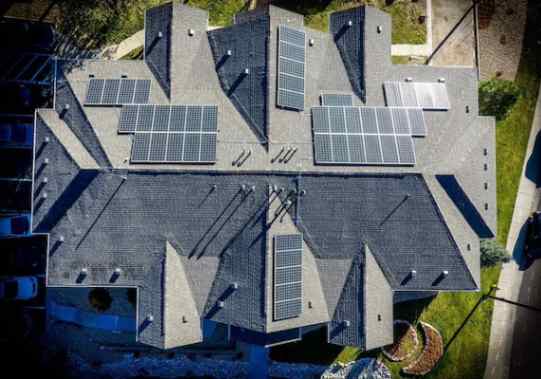
Heat waves encircled much of the earth last year, pushing temperatures to their highest in recorded history. The water around Florida was “hot-tub hot” — topping 101° and bleaching and killing coral in waters around the peninsula. Phoenix had ....
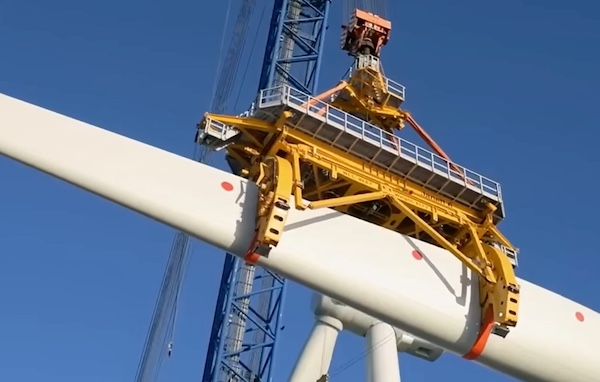
Wind turbines play a pivotal role in the global transition to sustainable energy sources. However, the harsh environmental conditions in which wind turbines operate, such as extreme temperatures, high humidity, and exposure to various contaminants, p....
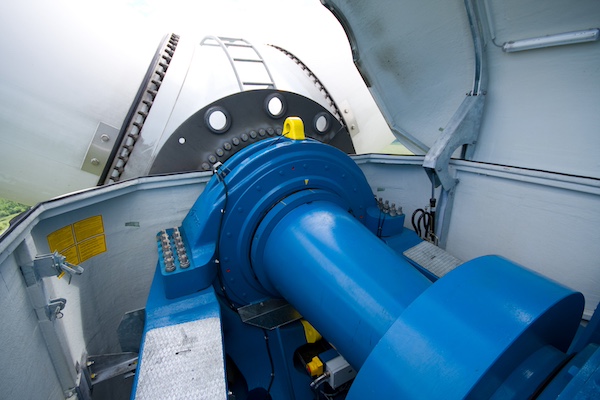
Wind energy remains the leading non-hydro renewable technology, and one of the fastest-growing of all power generation technologies. The key to making wind even more competitive is maximizing energy production and efficiently maintaining the assets. ....
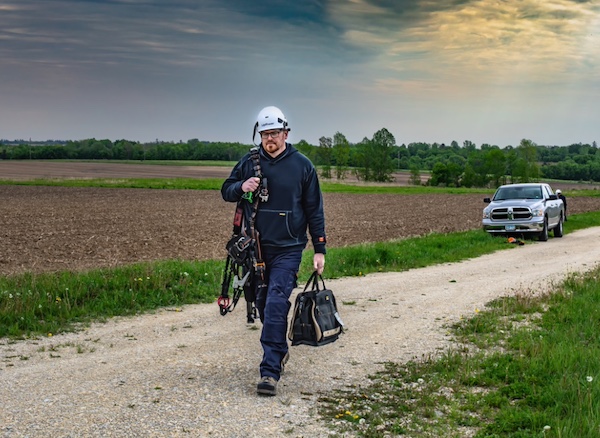
The allure of wind turbines is undeniable. For those fortunate enough to visit these engineering marvels, it’s an experience filled with awe and learning. However, the magnificence of these structures comes with inherent risks, making safety an abs....
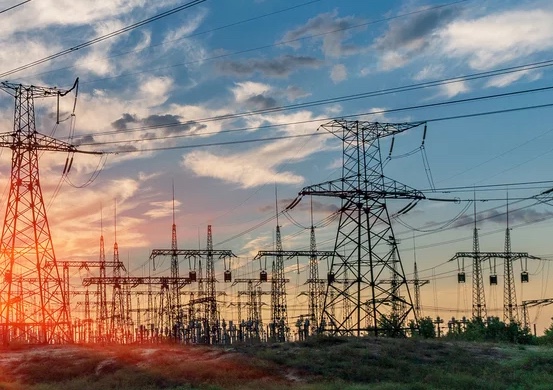
Battery energy storage is a critical technology to reducing our dependence on fossil fuels and build a low carbon future. Renewable energy generation is fundamentally different from traditional fossil fuel energy generation in that energy cannot be p....
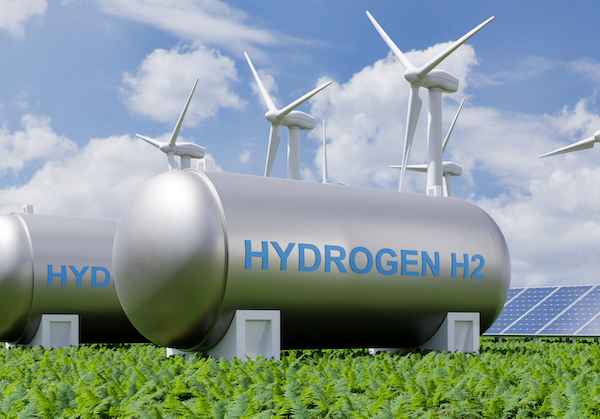
Not enough people know that hydrogen fuel cells are a zero-emission energy technology. Even fewer know water vapor's outsized role in electrochemical processes and reactions. Producing electricity through a clean electrochemical process with water....

In the ever-evolving landscape of sustainable transportation, a ground-breaking shift is here: 2024 ushers in a revolutionary change in Electric Vehicle (EV) tax credits in the United States. Under the Inflation Reduction Act (IRA), a transforma....

Now more than ever, it would be difficult to overstate the importance of the renewable energy industry. Indeed, it seems that few other industries depend as heavily on constant and rapid innovation. This industry, however, is somewhat unique in its e....

University of Toronto’s latest student residence welcomes the future of living with spaces that are warmed by laptops and shower water. In September 2023, one of North America’s largest residential passive homes, Harmony Commons, located....
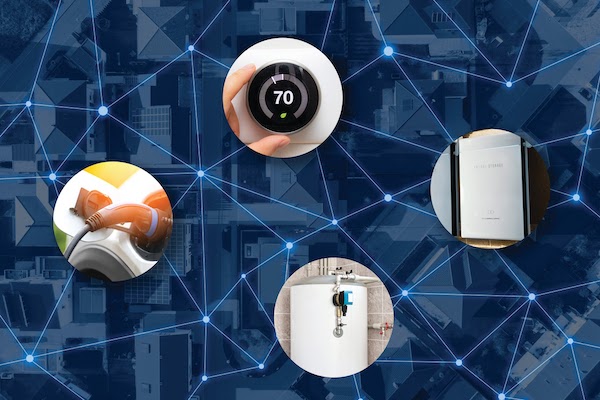
For decades, demand response (DR) has proven a tried-and-true conservation tactic to mitigate energy usage during peak demand hours. Historically, those peak demand hours were relatively predictable, with increases in demand paralleling commuter and ....